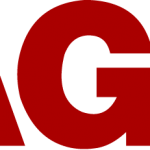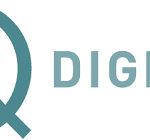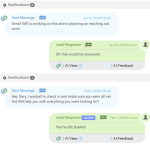Verizon’s Multi-Billion-Dollar Play To Take On Netflix, Amazon, Google & Facebook
It’s barely noon and the teenage girls at AOL’s live studio in downtown Manhattan are already doing the giggle-scream, their excitement at the sight of Beau Mirchoff, star of MTV’s Awkward, bubbling over into shrieks and Snapchats.
“I’m dying here looking at you!” a young woman in the front row wails into the microphone, in what passes for an audience question.
Mirchoff takes it all in stride. After all, he’s been a B-list teen idol for five years. And for AOL, too, it’s just another day at the office: In 2016, as part of its BUILD program, AOL is on track to do over 800 live audience events like the Mirchoff interview in its main studio. The BUILD videos stream on AOL’s media platforms, such as the Huffington Post, before being repackaged as Facebook posts, iTunes podcasts, Snap stories, and more. Depending on who’s watching, when, and where, AOL serves up targeted ads along with the video.
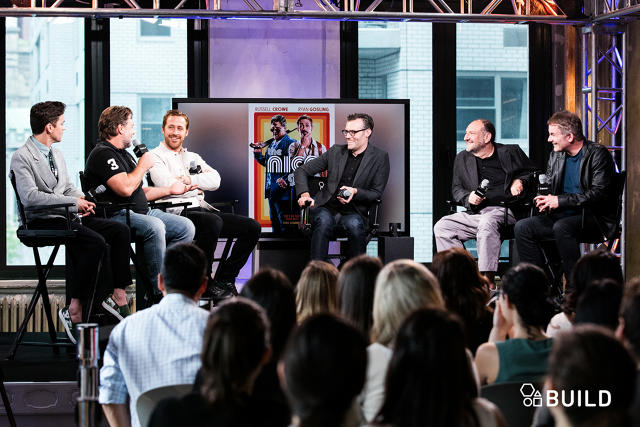
It’s easy to pooh-pooh AOL, which telecom giant Verizon bought last year for $4.4 billion. The company operates in a murky territory somewhere between the platinum brands of the media elite and the digital content farms relentlessly driving clicks. But in AOL, led by Google ad-veteran Tim Armstrong, Verizon saw an opportunity to start assembling the makings of a new media empire capable of competing in the attention economy with the likes of Netflix, Hulu, Amazon, Google, and even Facebook. Never mind that Verizon had little to no experience in the content-creation domain; it owned the means to reach millions of customers via its broadband lines and wireless spectrum (it is the largest wireless provider in the United States), and imagined that it could drive additional revenue by exerting greater influence over the content and advertising layered on top of those capabilities.
Through FiOS, its high-speed bundle for Internet and TV, Verizon has had a hand in the content-distribution world for over a decade. But when FiOS launched, back in 2005, Mark Zuckerberg was running a website for college students and a coterie of cable behemoths ruled video. Now a coup is brewing, as consumers gravitate away from cable’s rigid product structures and embrace the freewheeling world of YouTube stars and Amazon Golden Globe-winners. It’s a chaotic, competitive landscape, as incumbents in cable and telecom converge with Silicon Valley platforms, and Verizon is using its ample resources to claim strategic territory. Chairman and CEO Lowell McAdam has assigned executive vice president Marni Walden, a low-profile power broker on a first name basis with peers like Facebook’s “Sheryl” (Sandberg), to lead the charge.
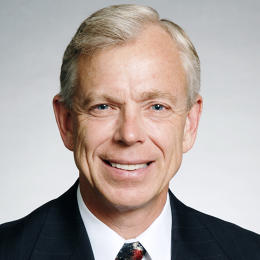
Walden, responsible for product innovation and new business, has been tasked with making media a revenue stream worth $5 billion per year. Most of those dollars will originate under the umbrella of AOL, where Armstrong operates a portfolio of publishers (including Tech Crunch, The Huffington Post, and Engadget) and ad capabilities. Verizon’s work in telematics (a fancy word for collecting data about cars and trucks) and the Internet of Things (IoT), also Walden’s purview, have been assigned the same $5 billion revenue goal.
“Media gets there first. And then telematics gets there second,” Walden says. In 2015, according to New Market Research, AOL brought in $2.7 billion in revenue.
Celebrity interviews, delivery trucks, agricultural sensors—on the surface, it’s unclear how media, telematics, and IoT relate, and why Verizon would be pursuing them. But the theory is that adding platforms and applications to the company’s connectivity infrastructure paves the way for lucrative service revenues. In telematics and IoT—both primarily B2B plays—Verizon has talent and experience, and is relatively well positioned to execute. Media, in contrast, is something of a gamble. Identifying up-and-coming content is “not exactly our strong suit,” McAdam told investors at a conference earlier this month.
Some analysts see the broadening scope as a liability. “We would rather Verizon focus on the business they know—they may have built the best wireless business on the planet—and let investors figure out where to invest in content separately,” New Street Research wrote in a report. As of the beginning of the year, Verizon had 39% of telecom industry revenue but just 17% of industry spectrum, according to the firm, a gap in capacity that is starting to show signs of strain.
There is no doubt, however, that Verizon needs to look for growth in new areas. The U.S. wireless market is at a point of saturation, with nearly all consumers owning a smartphone. Rivals like AT&T and T-Mobile have been winning market share by undercutting Verizon’s premium prices. And to top it off, the 40,000 union members that work on Verizon’s wireline assets are on strike, underscoring the burden of maintaining the company’s legacy businesses.
The fledgling media business, anchored by AOL, may indeed reach its $5 billion target on Verizon’s three- to five-year timeline. But revenue will need to climb much higher than that in order to have a significant impact on Verizon’s overall growth trajectory, given that the company brought in $131.6 billion last year. Hence McAdam’s recent interest in buying Yahoo: Like AOL, Yahoo is relatively affordable for Verizon. Plus, Yahoo’s 600 million monthly mobile users would provide Verizon with a useful shortcut to the ad revenue that large audiences enable—if (and it’s a big if) Verizon were able to find a way to right Yahoo CEO Marissa Mayer’s slow-motion capsize.
“I built a brand around fixing things,” says Walden, a Wyoming native who grew up surrounded by the great-aunts who ran her family’s cattle ranch. She has been with Verizon for more than two decades, crisscrossing the country before landing in New Jersey with her husband and son, now in elementary school. “They’d send me to a market that was in trouble, and I’d fix it,” she says of her career.
Her current role is a shift from problem solver to business launcher—or, depending on how you look at it, it’s her biggest fix yet. Maybe, in a way, it’s a bit of both.
The BUILD studio is a far cry from the sprawling, hushed corridors of Verizon headquarters in Basking Ridge, N.J. From here, McAdam has governed the telecom giant’s expanding empire and evolving ambitions since 2011. A former engineer who restores old cars in his spare time, it’s safe to say he did not expect to be investing in teen dramas like Betch and getting comfortable talking about his “crew” when he started the job.
“I have to be careful not to say, ‘why isn’t my favorite show on here,’ because I’m not the target,” McAdam says. Instead, he focuses on the numbers. “As long as it’s got a logic, that’s all that I care about.”
McAdam rose up through the executive ranks as Verizon was buying wireless spectrum and consolidating into a national network. Now, consumers largely take for granted the connectivity the company spent billions of dollars to establish. “The network will always be the foundation, but if you just do that you’re going to be relegated to being a commodity,” he says. “You’ve got to really build on that foundation in order to be relevant going forward.”
To understand Verizon’s strategy, consider the parallel transformation now underway at Apple. Like Verizon, known for the best-in-class quality of its network infrastructure, Apple is known for its best-in-class hardware products. But as growth slows—as of January, 198.5 million Americans already own a smartphone—both companies are looking for new revenue sources. Apple shares are down over 10% since the start of the year, as the company strains to convince investors that it can counter declining iPhone sales with increasing payments for software services layered over the foundation of all those devices already in consumers’ hands.
“The relationship with Apple doesn’t stop when you buy an iPhone,” Apple CEO Tim Cook said in an interview on CNBC earlier this month. “It continues. You might buy apps across the App Store. You might subscribe to Apple Music. You might use iCloud to buy additional storage. You might buy songs. You might rent movies. And so there’s a significant number of things.”
McAdam has been painting a similar picture of building a services business over the foundation of all its existing broadband and wireless subscribers, and emphasizing Walden’s service-related initiatives. “If we weren’t disrupting ourselves pretty significantly, somebody else is just going to do it to us, and that’s a lot less fun,” he says.

“Fun” was clearly on the agenda when I stopped by AOL’s NewFronts presentation to advertisers in September. In a cavernous event space along the East River, servers passed “deconstructed” cookies in test tubes and music thumped in the background. Snoop Dogg made an unlikely appearance. Arianna Huffington preached her corporate zen. Armstrong trumpeted the power of data. After the presentations, advertisers encircled the bar and talked shop.
Along the back wall, away from the action, was a demonstration booth showcasing Go90, Verizon’s new mobile video app. It works across carriers, and bears no traces of Verizon branding. I browsed the content, a mix of licensed episodes like Trevor Noah’s Daily Show and short-form originals like Guidance, commissioned by Go90 from teen-focused production company AwesomenessTV and starring former Gossip Girl villain Michelle Trachtenberg. Through a demo, I learned how to “clip and share,” a way to send specific video moments to friends on social media. Verizon believed the feature would help Go90 stand out from the pack, but “clip and share” felt like a feature borne of millennial focus groups held in rooms with one-way mirrors—and that turns out to be exactly how it came to be.
“We recognized based on the feedback how important it was to make that a key pillar of the product,” Walden told me when we sat down at Verizon’s innovation center in San Jose, California, the following month.
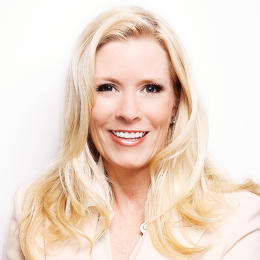
Several months later, Verizon had taken a 24.5% stake in Awesomeness TV—and clipping had disappeared. The feature made content licensing a hassle—sports leagues, for example, closely guard their highlight reels—and failed to deliver the social buzz Verizon had envisioned. Under AOL’s guidance, the Go90 team went back to basics: rebuilding the back-end technology delivering the videos in order to reduce downtime; improving discovery; and investing in content development. By January, according to Apptopia, Go90 had logged 2 million downloads, the majority via Google Play. (“I know we’ve seen some external reports on the number of downloads in excess of 2 million, but the key to us is not the downloads, the key is viewership,” CFO Fran Shammo told investors.)
Verizon has yet to disclose actual viewing data, but there are modest signs of growing pains. On April 2, when Go90 was the only service broadcasting El Clásico, the famed matchup series between football clubs FC Barcelona and Real Madrid, the app crashed amid the traffic surge. Like many others, I wasn’t able to watch until the second half. (According to Armstrong, those issues have been resolved—and Go90 isn’t alone when it comes to uptime problems: HBO Go has suffered similar snafus.)
Walden sees the evolving app as an example of how Verizon is learning to embrace Silicon Valley’s innovation mantra. “The typical Verizon, we would have waited until we got everything perfect on the app until we got the thing out,” she says. “That’s just how we [operate]—we don’t turn on LTE until we know it’s perfect. This was a different approach. We know we have to get it out there, let’s iterate on the app, we’ll continue to improve.”
Her delicate job, as Armstrong’s boss and McAdam’s direct report, is to nudge the company out of its comfort zone; part of the challenge has been figuring out where those boundary lines lie. Sometimes, a scheme goes too far. In IoT, for example, Verizon at one point had the “crazy idea” to hire doctors and develop health care applications, according to Walden. The company soon realized its error: Health care required expert domain knowledge that Verizon did not need to have on its payroll. The plan shifted: Instead of hiring physicians or creating wearables for hospice patients, for example, Verizon would release technology tools—SDKs, APIs—that would help others take on those projects. “We’ll partner, but we won’t try to be the experts,” Walden says. The approach mirrors what Verizon is doing in content creation; while Verizon can expertly provide the connectivity and the platform, partners like AwesomenessTV and Vice, so the thinking goes, can do content much better than the telco.
In a few select cases, Walden’s team has found a way to do it all. Take “mbrace,” the consumer product Verizon offers in partnership with Mercedes-Benz. A tiered subscription provides drivers with roadside assistance, in-vehicle Internet, and other features that rely on the Verizon network. “Mercedes is our best relationship because we do all three parts of that stack—we do connectivity, we do platform work, and then we do the services,” Walden says. “So from a value standpoint, the value of one car, when you own all three of those, is roughly $22 per month, compared to if you’re just doing connectivity with OnStar it’s, like, pennies.”
Media follows the same thesis: Own the connectivity, own the platforms, and own enough of the content and applications that you profit when they take off. But as before, it’s hard to know where to draw the line. Moreover, consumer tastes are notoriously difficult to predict—and hard to win over, in our current glut of programming. Just ask Mayer: Yahoo Screen, her video project, tried to bank on safe bets like a revival of the sitcom Community—to no avail. The product tanked, costing the company millions of dollars, and the Yahoo Screen team no longer exists.
At AOL, Armstrong is moving full speed ahead. On a tour of the company’s offices, he shows off a mobile-first video studio and touts the growth of his mobile ad sales team. AOL is still a minor league player in the world of mobile advertising—in terms of market share, it doesn’t crack the top 10, according to eMarketer—but Armstrong has been laying a foundation designed to expand the company’s reach. He has developed a stronger relationship with Facebook, for example, by making investments in the types of original short-form videos that play well on the social platform’s mobile app. (According to BuzzFeed News, Facebook has started paying live video media partners, including BuzzFeed itself; the typical three-month contract is worth around $250,000 and involves delivering 20 video posts per month.)

“I think there was a long period of time where the content business was not as powerful as distribution, and we’re going back to a time period where there’s a balance between it,” he says. He has encouraged Verizon to do deals like its investment in AwesomenessTV. “We said, don’t just write checks to license. Let’s take an ownership position in some of the content also.” (Competitors are vying for the same production talent: Last month Hulu bought AwesomenessTV’s Freakish horror series.)
Of course, distribution still matters. The distributor knows who’s watching, and can learn their behavioral patterns and interests—exactly the information that advertisers are eager to exploit. Facebook’s power resides in the scale of its distribution, and the data that scale entails. Armstrong sees a chance to chip away at that dominance by combining AOL’s visitor data with Verizon’s wireless and broadband subscriber usage data, which together can provide insights such as when suburban mom in the Sun Belt is most likely to go shopping. But first, he needs to grow the company’s mobile content consumer base. The goal is to reach 2 billion mobile users by 2020. “That’s going to come from us opening up our platforms [to more content creators], and from more partnerships and M&A,” he says.
As for the bidding process underway at Yahoo, with its tantalizing 600 million monthly mobile users, he declines to comment but acknowledges that he has stayed in touch with Mayer since leaving Google.
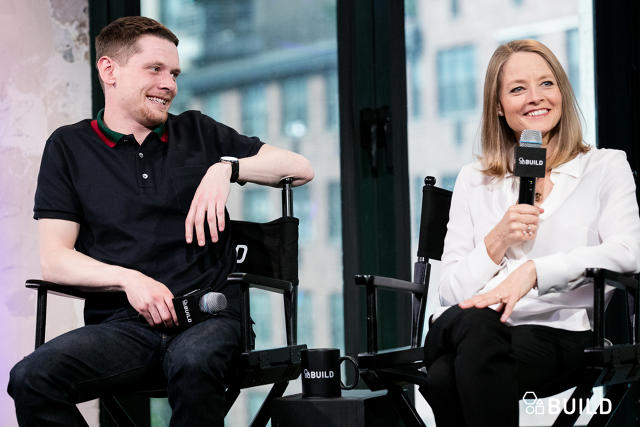
“We’re friends,” he says. “We worked together for almost 10 years there.”
Mayer has indicated she would prefer to stay at Yahoo. “I certainly hope the strategic alternative has a place for me,” she told Charlie Rose in March. If the winning bidder decides otherwise, Mayer stands to gain $55 million as part of her severance package. Odds are still on Verizon to win the deal, scheduled to conclude negotiations in June.
In the meantime, Verizon continues to invest in Go90, its gateway to, it hopes, becoming a video destination. New programming is in development, at AOL and through partners like AwesomenessTV, and there are rumblings of a future in which Go90 streams to your living room TV via your phone.
Walden says she often turns to her son for ideas, based on what his friends at school are watching. “I’m not a millennial but I have my own prototype who’s sitting in my house every day and giving me feedback and telling me about shows that I’ve never heard of,” she says.
Within limits, of course: Screen time is for homework-only during the week, and restricted on weekends. Walden’s husband, who grew up on an almond ranch, shares her childhood love of the outdoors and “old-fashioned” values. On the way to a recent hockey tournament, she recalls, “My husband must have said 10 times to my son, just look out the window and daydream!”
As a parent, the fight over mobile video is a losing battle for Walden. But Verizon is betting that it can win share in the battle for video, and the attention economy more broadly—if Walden and her team can come up with an experience and a programming lineup savvy enough to lure viewers away from new media giants like Amazon and Netflix.
Related Video: Check out the competition – How Facebook Is Becoming The One-Stop Site Of The Internet
Fast Company , Read Full Story
(54)




